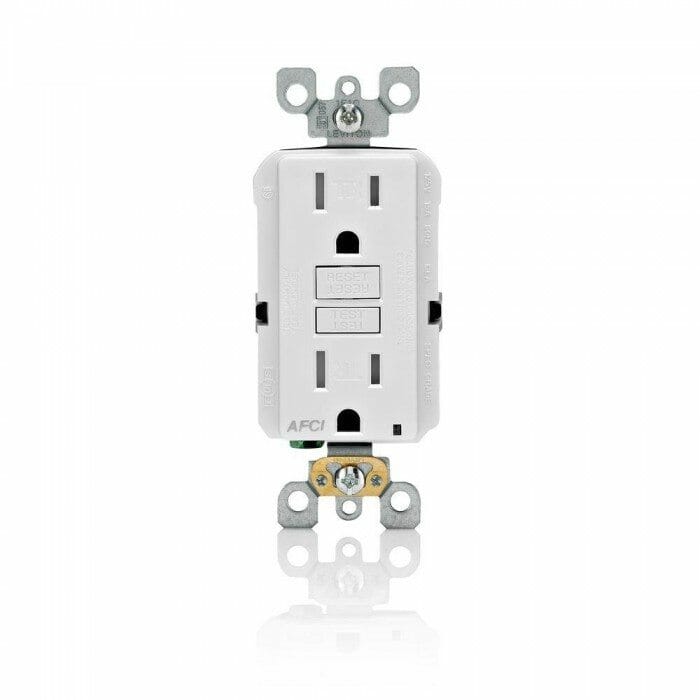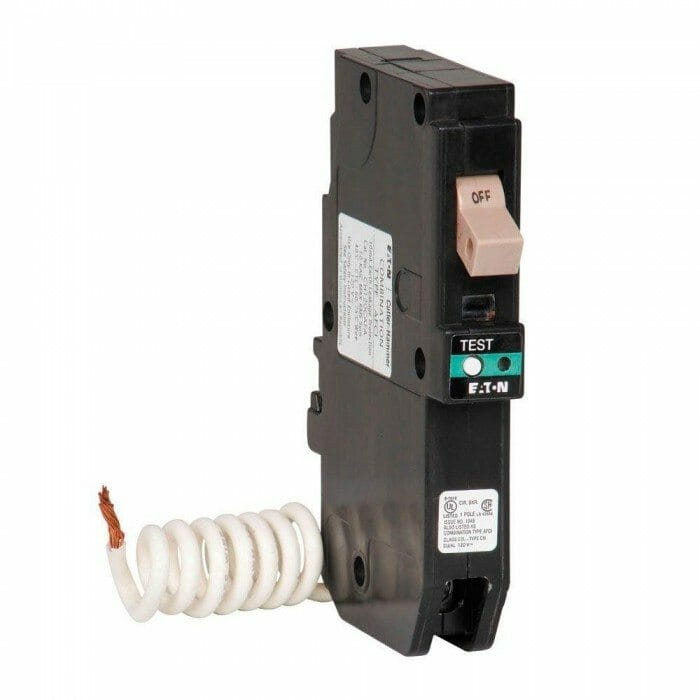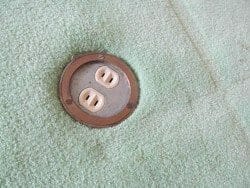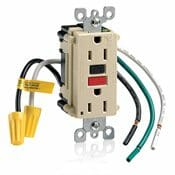AFCI Breakers and outlets
Home » Electrical » Outlets & GFCI »
Arc fault circuit interrupters are outlets (technically called receptacles) or circuit breakers that are designed to prevent or reduce electrical arcs in a home’s wiring system. They do this by monitoring the electrical wave patterns in a circuit and if it detects a specific type of change in this wave pattern, then it trips the breaker or shuts the outlet off.
What is the difference between AFCI and GFCI outlets?
AFCI’s are designed to help prevent house fires, and GFCI’s are basically designed to avoid injury from shock.
Fire safety
Arc faults occurs when the electric current crosses or jumps through the air from one wire to another, a little bit like lightening. When this happens, a fire may result.
This may occur when older wires have cracked or frayed insulation, or the insulation has been skinned, scrapped or damaged during the installation process, or when a nail or screw penetrates the insulation on wiring in the wall.
Wood catches at 570 +/- degrees Fahrenheit, A spark may be 2,400 (even 10,000) degrees Fahrenheit
The temperature that a piece of wood catches fire is around 570 +/- degrees Fahrenheit’, however, this varies greatly based on the type of wood, the length of time it has been exposed to heat, as well as a number of other factors.
An electrical spark, i.e. from an electrical arch fault, may generate heat reaching temperatures of 2,400 degrees Fahrenheit or more. It easy to see why wood framing in a home may catch fire. Arch fault issues with electrical wiring, outlets and switches, are one of the major causes of electrical problems.


2 ways to get AFCI protection
1. Have a AFCI breaker in the panel
2. Install AFCI outlets
Where are they recommended?
- Bedrooms
- Family rooms
- Living rooms
- Sun rooms
- Dining rooms
- Offices
- Dens
- Bonus & rec. rooms
- Library rooms
- Etc.
Basically AFCI protection is required through out the house and garage on all 120-volt, single-phase, 15- and 20-ampere branch circuits supplying outlets or devices installed in dwelling units.




How much does it cost to rewire a house? Who replaces wall outlets? You must be license to change breakers and outlets?.